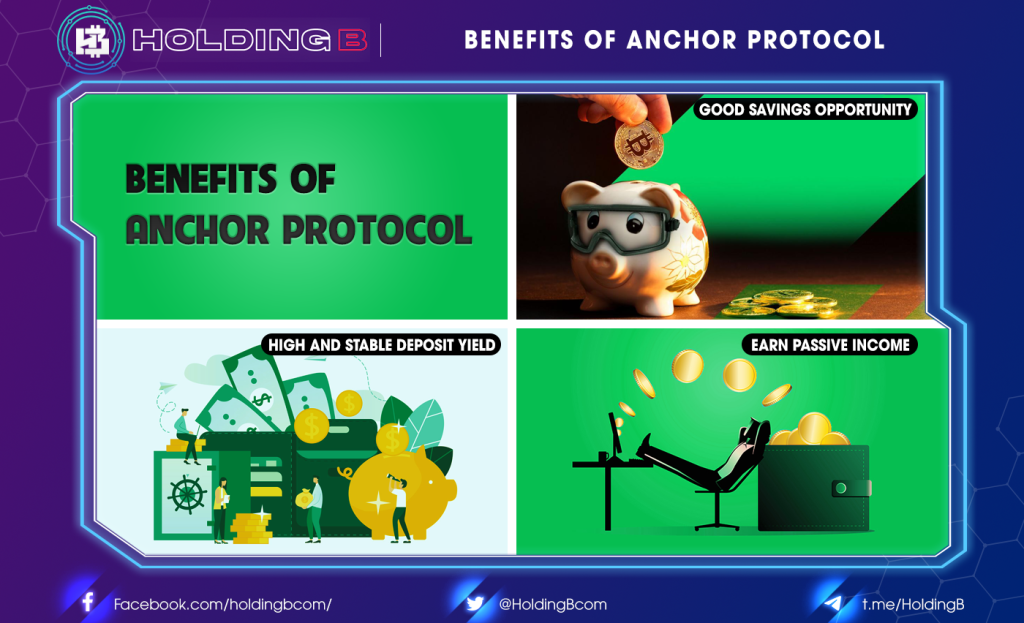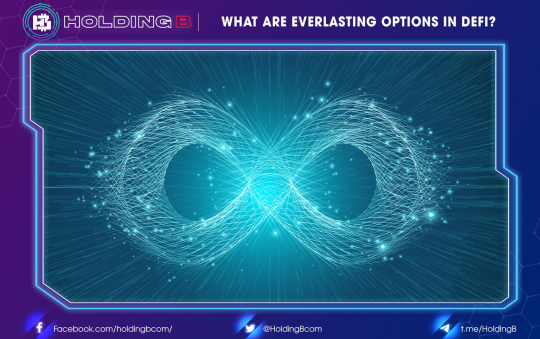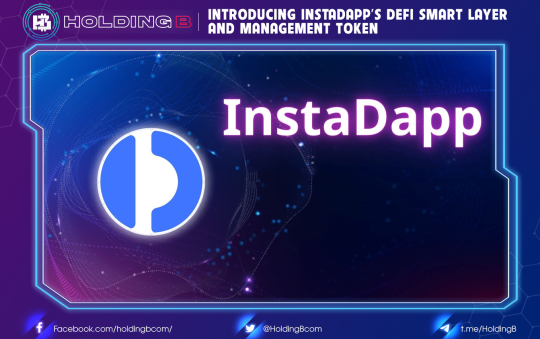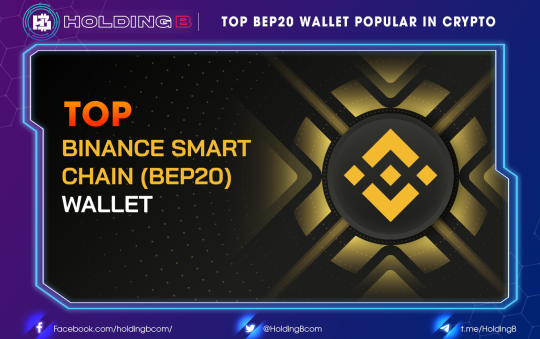The inspiration for the birth of the Anchor Protocol
Decentralized finance (DeFi) has attracted the attention of the financial and crypto community in recent times. followed by the rise of the second wave of DeFi service providers. It has brought incredible innovation to financial products, not only in quality but also in quantity, with more products hitting the market every day.
But until now, DeFi has not been able to provide the market with a safe and simple savings product. Since most assets in the cryptosphere are subject to price fluctuations, staking (staking) any asset is still fraught with risk.
Even stablecoins are not necessarily stable. As it is called a stablecoin, a digital currency developed on the Blockchain, This makes most crypto assets unsuitable for savings products. DeFi has yet to create a compelling savings product that is simple, convenient, and powerful.
And the Anchor protocol (ANC) was developed to solve this problem and meet the need for that economical product.
In the following guide, we will look at how Anchor Protocol works, its advantages and disadvantages, and try to help you understand whether this is worth your time and attention.
What is the Anchor Protocol?
The Anchor Protocol is a lending protocol based on Terra. It offers UST depositors a 20% annual return. This is called the APY. Borrowers can use bonded LUNA (bLuna) or bonded ETH (bETH) to secure UST loans.
When was the Anchor Protocol founded?
Anchor Protocol was founded in 2020 and is headquartered in Seoul, South Korea. It was officially launched on March 17, 2021. Terraform Labs (TFL) is the company that developed this application. Terraform Labs is the company behind the stablecoin UST and the token LUNA.
The Anchor protocol is designed to work in conjunction with the blockchain and its cryptocurrency, LUNA.
Anyone can participate in the protocol. Anchor is a promising savings tool. It is also a decentralized protocol. This means anyone can join without KYC from anywhere.
How does the Anchor Process work?
As mentioned before, Anchor Protocol follows three main goals.
The first involves paying in UST.
The second refers to the savings made using Anchor.
Third, it’s an investment opportunity. It does this using loan liquidation, bonded assets (bAssets),
To borrow stablecoins, borrowers lock up bonded assets (bAssets) as collateral and borrow stablecoins at the LTV rate determined by the protocol. Currently, only LUNA is supported.
Currently, Anchor Protocol offers a high annual return of almost 20%. It also promises low risk and protection from market volatility through its stablecoin. In addition, the platform itself is very easy to use. Newbies can easily access the process of buying coins and staking them.
If you are not familiar with bAsset, let’s find out below!
It is the token that represents ownership of Proof of Stake assets. Technically, assets can be created on any PoS blockchain that supports smart contracts.
This token, like the asset you have staked, will grant you the block reward. A BAsset differs from a security deposit in that it is replaceable and transportable.
This means that when you deposit some assets in exchange for the stablecoins you are borrowing, those assets will not work. Instead, the block rewards earned from those assets will be used to provide you with a steady interest. => Anchor generates passive income on the blockchain.
This savings protocol also allows you to instantly withdraw funds from your account with only a low volatility interest rate paid to depositors. However, currently, Anchor only accepts Terra (LUNA).
What is token ANC?
ANC tokens can be used to
Submit to create new governance polls: You can buy or sell ANC tokens if you want to participate in the governance process.
Voting by users who have staked an ANC incentive to support loan demand and stabilize initial deposit interest
What exactly is Terra Money Market?
It is a Web Assembly (WASM) smart contract built on the Terra blockchain that allows the deposit and borrowing of Terra-based stablecoins. In other words, it is a pool of different Terra deposits that are collecting interest from the borrowers who use it.
What are Anchor Protocol fees derived from?
Anchor Protocol fees are derived from asset rewards, excess yields, and collateral liquidation fees.
Asset rewards
A portion of the rewards from the deposited asset collateral is used to purchase ANC, and the rest is used to replenish the yield reserve.
Excess profit
Deposit yields in excess of the target deposit rate are accrued to the yield reserve, with a portion used to purchase ANC tokens. Purchased ANC tokens are then redistributed to ANC distributors.
Mortgage liquidation fees
Whenever a loan is liquidated, 1% of the value of the liquidated collateral is deposited into the yield reserve fund, a portion of which is used to purchase ANC. This fee is applied separately from the bid fee.
Benefits of the Anchor Protocol

Good savings opportunity
This savings protocol also allows you to instantly withdraw funds from your account with only a low volatility interest rate paid to depositors. However, currently, Anchor only accepts Terra (LUNA).
High and stable deposit yield
It is backed by the bonus of asset collateral. That is, to borrow stablecoins, borrowers lock up bonded assets (bAssets) as collateral and borrow stablecoins under the LTV rate determined by the protocol. Currently, only LUNA is supported.A cumulative amount of staking rewards is then sent to the collateral pools, converted to stablecoins, and given to the lender as a stable return.
Earn passive income
Overall, crypto assets are not the best option for someone seeking a low-risk passive income. solves this problem. As I mentioned above, the Anchor protocol creates a marketplace between stablecoin lenders and stablecoin borrowers based on collateral.
Depositors of Terra stablecoin will be able to get their stablecoin back. In this way, the volatility associated with crypto-assets is avoided.
Users who have acquired assets can earn a steady profit through staking, which is meant to incentivize the use of the protocol.
Note:
The deposited stablecoins are represented by Anchor Terra (aTerra). aTerra tokens are exchanged for the initial deposit plus accrued interest.
Users can borrow stablecoins with their assets. They can then also buy more of the same asset to increase their leverage. Users can also benefit from low interest rates by borrowing stablecoins at a lower cost and investing in assets with a higher yield than the borrowing cost.
Users who have acquired assets can earn a steady profit through staking. This encourages the use of the protocol. Because it accepts assets as collateral, the Anchor Protocol has the potential to be a lasting proposition.
Anchor Protocol’s development potential
The Exchange Anchor mode is a good way to accomplish both.
However, it can also be vulnerable to smart contract risks. However, there are third parties that monitor the situation according to the Anchor Protocol.
See ya in the next article !
Don’t forget to follow useful articles about Crypto Market from team Holding B !!!
- Telegram Channel: https://t.me/HoldingBcom
- Telegram Group: https://t.me/HoldingB
- Website: https://holdingb.com/
- Twitter: https://twitter.com/HoldingBcom
- Facebook: https://www.facebook.com/holdingbcom





